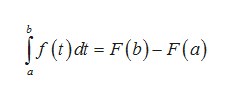f(t) dt where f(t)= Consider the function B defined by the rule B(r) 11 6-2t. 1. Compute B(1) and B(2) exactly 2. Use the first Fundamental Theorem of Calculus to find a formula for B(r) that does not involve integrals. That is, use the first FTC to evaluate (G-21) dt. 3. Ohserve that f is a linear function: what kind of function is B? 4. Using the formula that you found in part (b) that does not involve inte- grals. compute B' (r). 5. While we have defined f by the rule f(t) 6- 2f., it is equivalant to say that fis given by the rule f(r) = 6-2.r. What do you observe about the relationship between B and f?
f(t) dt where f(t)= Consider the function B defined by the rule B(r) 11 6-2t. 1. Compute B(1) and B(2) exactly 2. Use the first Fundamental Theorem of Calculus to find a formula for B(r) that does not involve integrals. That is, use the first FTC to evaluate (G-21) dt. 3. Ohserve that f is a linear function: what kind of function is B? 4. Using the formula that you found in part (b) that does not involve inte- grals. compute B' (r). 5. While we have defined f by the rule f(t) 6- 2f., it is equivalant to say that fis given by the rule f(r) = 6-2.r. What do you observe about the relationship between B and f?
Calculus: Early Transcendentals
8th Edition
ISBN:9781285741550
Author:James Stewart
Publisher:James Stewart
Chapter1: Functions And Models
Section: Chapter Questions
Problem 1RCC: (a) What is a function? What are its domain and range? (b) What is the graph of a function? (c) How...
Related questions
Question

Transcribed Image Text:f(t) dt where f(t)=
Consider the function B defined by the rule B(r)
11
6-2t.
1. Compute B(1) and B(2) exactly
2. Use the first Fundamental Theorem of Calculus to find a formula for B(r)
that does not involve integrals. That is, use the first FTC to evaluate
(G-21) dt.
3. Ohserve that f is a linear function: what kind of function is B?
4. Using the formula that you found in part (b) that does not involve inte-
grals. compute B' (r).
5. While we have defined f by the rule f(t) 6- 2f., it is equivalant to say
that fis given by the rule f(r) = 6-2.r. What do you observe about the
relationship between B and f?
Expert Solution
Step 1
Given f(x)=6-2t, the fuction B(x) is defined by

Step 2
B(1) and B(2) can be evaluated as
![1
B(1)- f)di-j(6-2t)dt - [6r--0
__
=
2
2
B(2)-5)d[(6-21) d - [r-f[6(2)-(2)]6)-(]3
=6t
=
1](https://content.bartleby.com/qna-images/answer/82e5cc6c-b32d-47de-87ae-a65f1315a5fd/49eac19a-29de-4588-8ffa-a7696c9281f6/g5zrkw.png)
Step 3
If F'(t)=f(t),then by Fundamental theorem of calculus, we have

Step by step
Solved in 5 steps with 4 images

Recommended textbooks for you

Calculus: Early Transcendentals
Calculus
ISBN:
9781285741550
Author:
James Stewart
Publisher:
Cengage Learning

Thomas' Calculus (14th Edition)
Calculus
ISBN:
9780134438986
Author:
Joel R. Hass, Christopher E. Heil, Maurice D. Weir
Publisher:
PEARSON

Calculus: Early Transcendentals (3rd Edition)
Calculus
ISBN:
9780134763644
Author:
William L. Briggs, Lyle Cochran, Bernard Gillett, Eric Schulz
Publisher:
PEARSON

Calculus: Early Transcendentals
Calculus
ISBN:
9781285741550
Author:
James Stewart
Publisher:
Cengage Learning

Thomas' Calculus (14th Edition)
Calculus
ISBN:
9780134438986
Author:
Joel R. Hass, Christopher E. Heil, Maurice D. Weir
Publisher:
PEARSON

Calculus: Early Transcendentals (3rd Edition)
Calculus
ISBN:
9780134763644
Author:
William L. Briggs, Lyle Cochran, Bernard Gillett, Eric Schulz
Publisher:
PEARSON

Calculus: Early Transcendentals
Calculus
ISBN:
9781319050740
Author:
Jon Rogawski, Colin Adams, Robert Franzosa
Publisher:
W. H. Freeman


Calculus: Early Transcendental Functions
Calculus
ISBN:
9781337552516
Author:
Ron Larson, Bruce H. Edwards
Publisher:
Cengage Learning